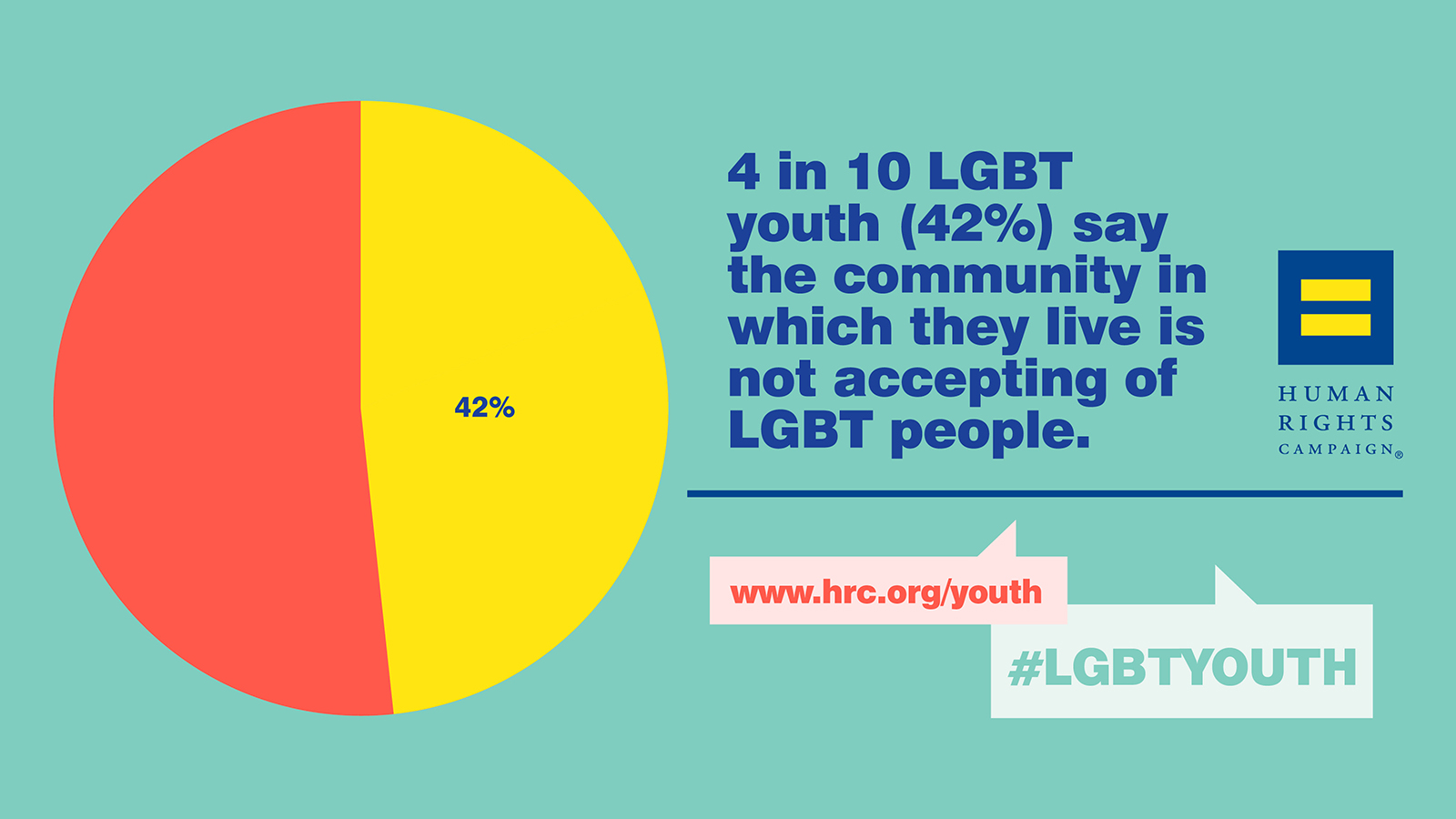Growing up gay is not easy, especially at younger ages when one does not even know the term for who one is. All you know is that you are different even if one cannot describe or quantify the difference. As one gets older, the disconnect grows stronger and, in my case, high school was a nightmare, as I tried to hide my innate difference. Today, things are far better for many LGBT youth, but for many others, little has changed over the last 50 years. While there are now LGBT role models and celebrities and some schools have gay-straight alliances, church and family expectations and anti-gay bigotry still make lives of many LGBT youth a living hell. Indeed, estimates are that 40% of all homeless youth are LGBT, often thrown out by parents or feeling forced to flee. Now, with the Trump/Pence regime pushing the U.S. Supreme Court to legalize anti-LGBT discrimination, the stress many LGBT youth experience is likely to increase. A piece in The Atlantic looks at the lack of social support so many LGBT youth experience. Here are highlights:
The 12-year-old drag star Desmond Napoles is one of a growing number of kids who have embraced an LGBTQ identity at an early age. He has already come out as gay. Recent postings on his Instagram feed, which has 181,000 followers, feature him posing in a purple wig with red lips pursed, or in a rainbow dress at Brooklyn Pride. . . . “He is spreading the message that it is okay for kids to drag,” his mother, Wendy Napoles, told Gay Star News. And to “explore their identity and express themselves, without shame, without hiding.”Her son may be precocious, but most queer kids remember feeling different very early in their lives. . . . . Years later, a family photo surfaces—of a boy holding a doll, say, as his brothers roughhouse nearby—that, in retrospect, makes the story seem obvious. These unwittingly campy childhood photos also communicate a reality generally overlooked in society: Budding queer identities have nonsexual elements that often form long before puberty, signaling what lies ahead.
Nevertheless, seeing preteens involved in drag shows—an age-old staple of LGBTQ culture, often performed in gay clubs—makes a lot of people uncomfortable. Critics have accused Desmond’s mother of allowing her son’s sexualization and exploitation. After another preteen boy performed drag in Ohio, state Republicans proposed legislation barring these performances, linking them, without evidence, to child trafficking.
Over time, American society has been steadily making peace with gay adults, gay marriages, even gay political candidates. Yet it still broadly pretends that people are straight until, at some point after age 18, they proclaim themselves otherwise. . . . . by this logic, all things LGBTQ should be relegated to adult spaces, preventing children’s premature sexualization. This explains why the backlash to preteen drag performers like Desmond has been so fierce—and why so many queer kids, with their difference manifesting as awkwardness, are forced to tread the rough waters of adolescence with no social support.
Numerous studies have shown that children who eventually come out as gay, lesbian, or bisexual—scientists call them pre-homosexual, or pre-GLB kids—demonstrate more childhood gender nonconformity in their speech, body language, and choice of activity than their pre-straight contemporaries do. These reports have also produced evidence of a “dosage effect”: The more gender nonconformity someone shows in childhood, the more likely they will identify as gay, lesbian, or bisexual as an adult.
Critics instead see adults in and aligned with the LGBTQ community as sexualizing children by exposing them to what a National Review writer calls a “deeply and perversely erotic subculture.” Conservative media have accused Wendy Napoles of endangering her son.
This adult disquiet allows for the continued neglecting of nascent queerness, leaving pre-GLB kids to be mocked, rather than affirmed, fostering another generation of queer people who carry scars into adulthood. “Growing up gay, it seems, is bad for you in many of the same ways as growing up in extreme poverty,” Michael Hobbes wrote in a much-discussed 2017 HuffPost article. A 2015 study showed that gay people as adults produce less cortisol, the hormone that regulates stress—–“their systems were activated, so constantly, in adolescence that they ended up sluggish as grownups”––than their straight counterparts. A 2014 study similarly showed that “stressful life events” inflict more damage on gay kids’ nervous systems than on their straight peers’ nervous systems.
Growing up LGBTQ is isolating, a reality pointedly depicted by a 2016 Saturday Night Live sketch titled “Wells for Boys.” . . . .To that script we might add: Some kids are straight; other kids are gay.
But pre-GLB kids, even if they’re not as forthright in their nonconformity as Desmond is, should not be forced to wait for adulthood to receive society's permission to be themselves. Instead, they need age-appropriate safe spaces—so they don’t have to co-opt more mature queer arenas—in which they can come to grips with their otherness. Queer kids know they’re different, even before most have the words to say so; for their sake, we need to listen a bit more closely.

No comments:
Post a Comment